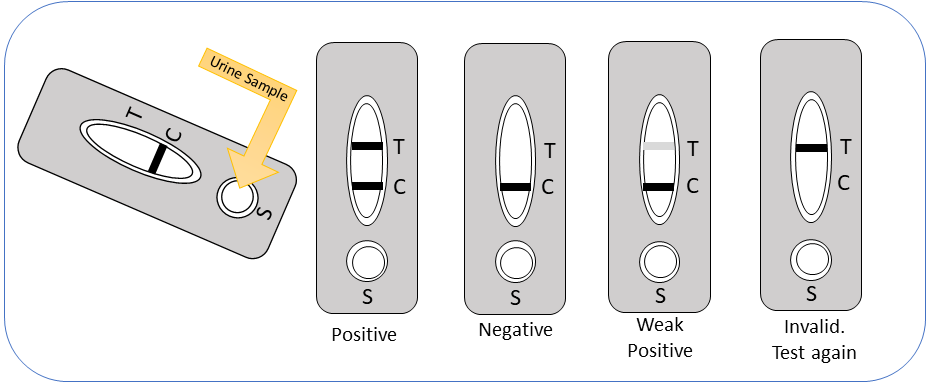Everything You Need to Know about Urine Pregnancy Test (UPT)

Discovering pregnancy is a significant moment in a couple’s life.
The first step in confirming pregnancy at home is usually through a Urine Pregnancy Test (UPT). But how does it work, when should you take it, and how reliable is it? Let’s break it down.
How Does a Urine Pregnancy Test Work?
A UPT detects human chorionic gonadotropin (hCG), a hormone produced by the placenta shortly after implantation. The test is designed to identify even small amounts of hCG in urine, signaling the early stages of pregnancy.
Urine pregnancy test vs. Blood Pregnancy test
BPT is much more sensitive than the UPT. In the BPT, amounts of b-hCG hormones are quantified; that is the levels of hormones present in the body is known. However, UPT gives information about presence or absence of hormone in the body
When Should You Take the Test?
For the most accurate results:
- Best time: Use the first-morning urine, as it is more concentrated and contains higher levels of hCG.
- Best day: Wait until at least 07 days after missed periods. Testing too early may result in a false negative because b-hCG levels might still be too low to detect.
How to Use a Urine Pregnancy Test at Home?

- Collect urine:
- Directly urinate directly on the test strip; OR
- Collect mid-stream urine in a clean container and dip the strip. (Morning sample of urine has maximum concentration of hCG hormone)
2. Wait for results: Most tests provide results within 2–5 minutes.
3. Reading the test:
- Both Control and Test line are seen : Positive (Pregnant)
- Only Control line seen : Negative (Not Pregnant)
- Strong Control line with Weak Test line seen:- Repeat the test.
- No line / invalid result: The test might be faulty or used incorrectly.

How Reliable Is a UPT?
Home pregnancy tests claim accuracy rates of 97–99% when used correctly.
However, several factors can affect reliability:
- Testing too early: Low hCG levels may not be detected.
- Diluted urine: Drinking too much fluid before testing may give false negatives.
- Expired test kits: Always check the expiration date before use.
- Certain medications: Fertility drugs containing hCG can cause false positives.
What If the Test Is Positive?
A positive UPT indicates pregnancy.
However, but it is essential to
1.confirm it with a blood test; and
2. confirm intrauterine gestation sac by ultrasound.
Visit a doctor to ensure the pregnancy is healthy and progressing normally.
What If the Test Is Negative But Periods Are Still Delayed?
If you get a negative test but still miss your period, consider:
- Retesting in a few days (hCG levels double every 48 hours in early pregnancy)
- Checking for other causes like stress, hormonal imbalances, or irregular cycles
- Consulting a doctor for further evaluation
Note:-
- When the Strip is exposed to air for long periods of time, a weak shade is seen in the Test line region. Such strip should not be used. UPT kits with faulty packaging should not be used.
- In case of difficulty in performing Urine pregnancy test, couple can go for Blood pregnancy test at a reputed lab.
Final Thoughts
- A UPT is a simple, accessible, and reliable way to check for pregnancy.
- Understanding how to use it correctly and interpreting results accurately can help couples make informed decisions.
- If there is any confusion, consulting a healthcare provider is always the best step forward.


